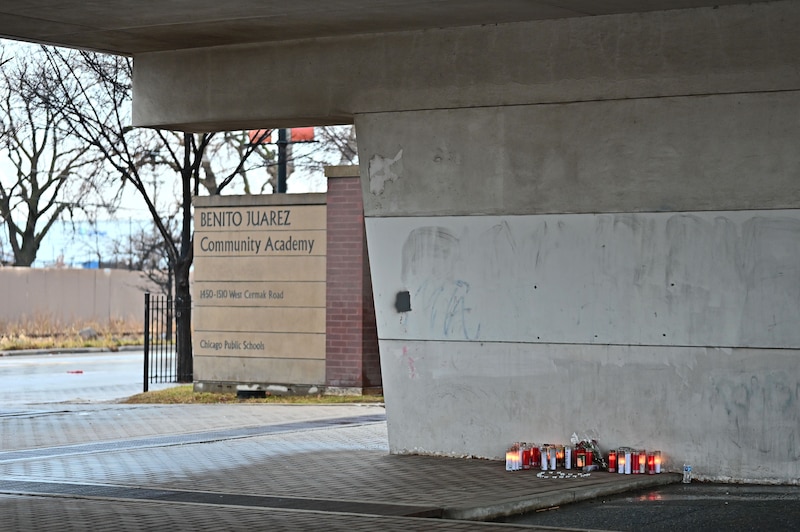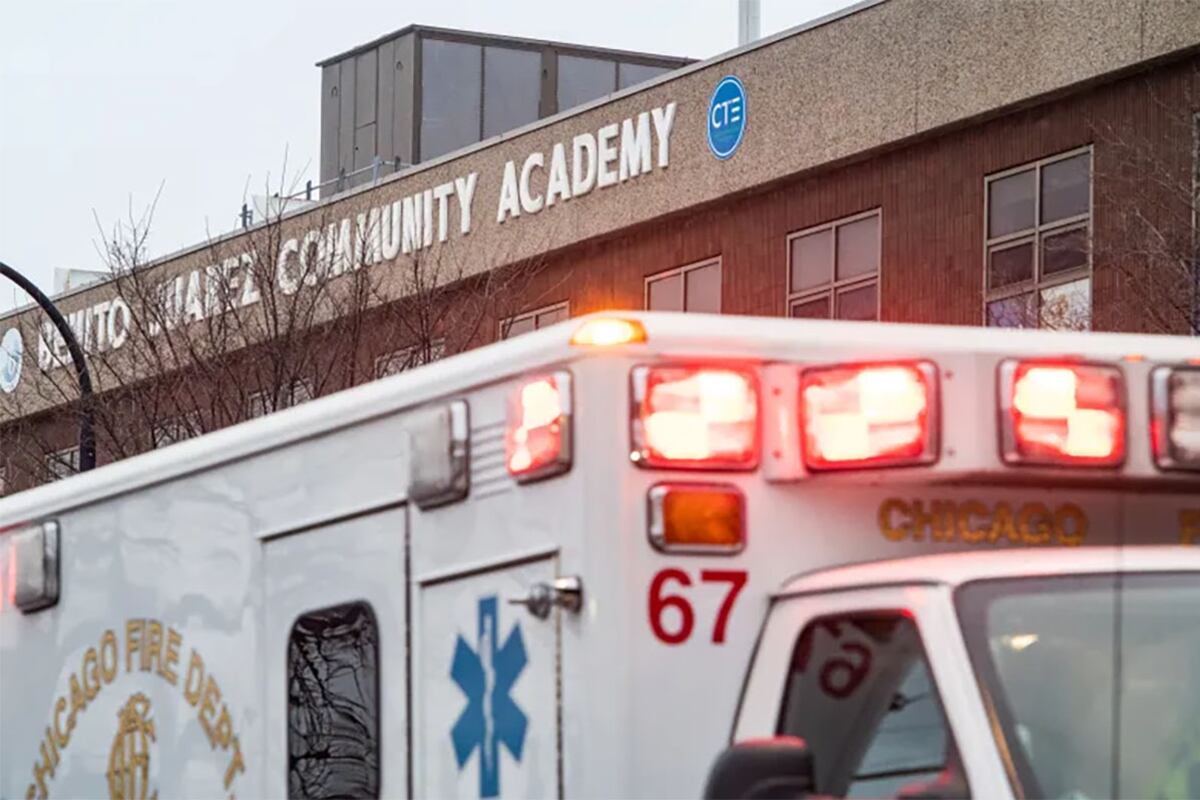This story was originally published by the Illinois Answers Project.
For three critical hours after four students were shot, two fatally, at Benito Juarez High School, the school principal and some staffers threw up roadblocks to the police investigation and weeks later had to be threatened with grand jury subpoenas to spur their cooperation, the Illinois Answers Project has learned.
Detectives on the scene of the mass shooting that happened just before Christmas 2022 quickly learned the four victims and the suspected shooter were all current or former CPS students and asked to view school surveillance video, to interview a student witness who’d given information to school officials, and sought access to other records relating to the students involved.
But at most every turn, according to public documents and police sources, school principal Juan Carlos Ocon and other administrators told detectives that cooperating would violate CPS policy, and they insisted on checking with their legal department.
The delays — which have never been previously reported — cost investigators invaluable time to interview witnesses and gather physical evidence, law enforcement sources said. Police arrested a 16-year-old about eight weeks later in connection with the mass shooting after they saw him leaving a stolen car with a rifle. But between the slayings at Juarez and his arrest, he is suspected of taking part in another shooting, authorities said. He has pleaded not guilty in the Juarez shooting, and his defense attorney pointed to the delay in his arrest to question the strength of the case. Illinois Answers is not naming the teen since he was a juvenile at the time of the shooting.
Interviews with Chicago police and CPS sources and a review of thousands of pages of police and school records and emails, many of them heavily redacted, paint a scene of chaos at the site of the Juarez shooting and show how sharp disagreements quickly developed between officers and the school’s award-winning principal, Ocon.
Police told Ocon and CPS’ chief of safety and security, Jadine Chou, that the emergency of the shooting warranted their cooperation, and the disagreement set off a back-and-forth between high-ranking officials in both agencies that would stretch over months.
While police discussed having Ocon charged with obstruction of justice, they eventually decided not to, and CPS never disciplined Ocon, records show.
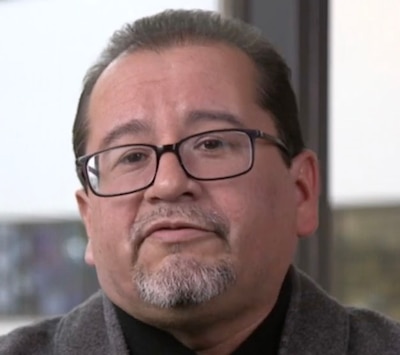
In an interview with Illinois Answers, Chou disputed the duration of the delays in cooperation, as outlined in emails at the time from the CPD’s chief of detectives and investigators on the scene. She argued police eventually got access to the surveillance video and information given to the principal that day by a school employee.
“It is incomprehensible that anyone would think that we, anyone else, me, anyone around me, would want to do anything to block … would block or delay or forestall progress on an investigation,” Chou said.
A CPS spokeswoman said there’d been no findings of wrongdoing, but records show the agency never conducted a comprehensive after-action review of what happened.
“It’s because when we sat down to talk about it, it was this: (CPD had) the information, you had the camera, you had access to the camera,” Chou said. “What’s … the after action? You know what, we could both do better on the clarification of the guidelines.”
Tension between the police and CPS has existed for years over the reporting of violence on school grounds and how and when police can arrest students involved in violent crime. One investigator described CPS as viewing itself as a “non-extraditable Vatican within the city of Chicago.”
But even among police officials accustomed to dealing with CPS during investigations, the degree of resistance they encountered at Juarez stood out, law enforcement sources said.
The dispute spurred CPS to consider changes in how it deals with police when violent crimes happen on school grounds, involving students. And it appears as if cooperation between the two agencies has improved in recent months, through an informal agreement, with police quickly getting access to critical information in two Chicago school shootings. But 17 months after the Juarez slayings, CPS officials have not created any formal policy or update but say they expect to have one finalized before the 2024 school year — about 21 months after the shooting.
At least some of the disagreement stems from an apparent misreading of federal and state law governing the release of student records.
Chou said in the interview that she spoke to CPS counsel from the scene of the shooting. A high-ranking CPS lawyer, Ruchi Verma, recounted in a CPS email that she told Chou: “if there is an active shooter situation … information could be disclosed. No one informed us that there was an active shooter situation.”
But district policy, state law, federal law, and training documents circulated within CPS all allow school officials to cooperate with police during “health and safety” emergencies, and none set the threshold for cooperation as high as active shooter situations. Verma, who is now the district’s general counsel, didn’t respond to a request for comment.
A national expert on the applicable federal law said in an interview with Illinois Answers that school officials should have cooperated with police.
“What you just described would clearly be a health safety emergency exception. If there’s a shooter, they don’t have him apprehended, give them whatever they want. I don’t know if they didn’t understand that at the school,” said LeRoy Rooker, who served for 21 years as director of the Department of Education’s Family Policy Compliance Office. “It doesn’t matter what it was — they can give any of that stuff to law enforcement if it’s a health or safety emergency.”
A CPS spokesman said CPS officials on the scene provided information to police on “an ongoing basis.”
After about three hours, the school’s principal shared information about the former student suspected in the shooting, and police were eventually able to get video from the city’s 911 center. By the time Chicago police started getting at least some information, top brass scheduled a news conference at the district police station nearby. Police sources described this news conference as an attempt to present a unified front between CPS and the police despite the conflicts.
Much remains unknown about the afternoon of the shooting because CPS, CPD, and other city agencies have either denied access to records detailing the investigation or have released only heavily redacted versions. Sources in each agency spoke on the condition they not be identified, citing agency rules forbidding media interviews and fearing retribution.The Chicago Police Department declined to make any of its officials available for interviews and declined to answer questions about the mass shooting investigation.
Even that night, after some of the disputes were resolved, police had doubts about CPS continuing to provide what they needed. A timeline of the investigation shared among homicide division supervisors shows police still were uncertain whether video existed from a CPS camera near the shooting.
Those doubts proved well-founded. Ocon didn’t respond to detectives for weeks after the shooting, and other CPS staff ignored requests for interviews, records show. Frustrated with the pace of cooperation, detectives resorted to running parts of their investigation through the police department’s chief attorney, who sent requests for evidence to her counterpart at CPS.
In early January, a sergeant in the detective division told the department’s top attorney, Dana O’Malley, that some CPS staff continued to ignore detectives and that the principal still hadn’t turned over a school document detectives had been seeking for weeks. At one point, a homicide detective, John Korolis, sent Ocon an email telling him he could get a grand jury subpoena if Ocon didn’t start returning his voicemail messages.
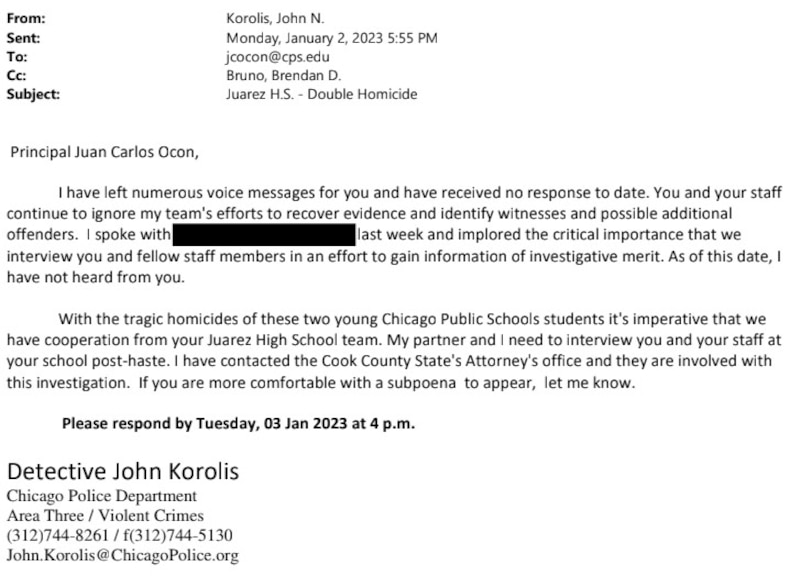
Almost three weeks had passed since the shooting.
Afternoon of the shooting
At 2:35 p.m. on Dec. 16, 2022, the dismissal bell rang at Benito Juarez Community Academy in Pilsen. Dozens of students and staff lingered in a courtyard outside the school near a pedestrian overpass, according to prosecutors at the initial court appearance of the teen charged in the shooting. Informally, it’s near an area known as “the rock.”
A few minutes after dismissal, a girl was standing with some students lingering outside. She walked over to another group of teens nearby where she ran into a 16-year-old boy who’d been expelled from Juarez for attendance and behavior problems, according to prosecutors. Someone mentioned that there were La Raza gang members in the group she had been standing with.
The girl returned to those teens and warned them that the former student was there “to cause trouble” and that they should leave.
At 2:38 p.m., the former student asked one of the victims if he was a La Raza gang member and then fired at least eight rounds from a .357 handgun, hitting three boys and a girl described as an “unintended target,” authorities said.
Students scattered. A security guard witnessed the shooting and briefly ran after the gunman while a passing motorist tried to point the guard in the right direction. At least one witness took a photo of the armed teen standing over a victim and then chased the gunman before losing sight of him.
At 2:40 p.m, police arrived to find the four victims. The two students who died, Nathan Billegas, 14, and Brandon Perez, 15, were both shot in the head, records show. Billegas was a student at Bulls College Prep, and Perez a student at Juarez.
A 15-year-old boy and 15-year-old girl were also shot, and both survived. The girl had a graze wound to her thigh. The boy had a gunshot wound to his shoulder and thigh. The witness — who’d walked between the groups — wasn’t wounded.
Perez died at 3:06 p.m.
At 3:10 p.m., a teacher emailed the principal and other administrators to let them know 25 students and two other staff members were taking shelter in his classroom.
“I know you are all busy right now but just wanted to let you know. The staff and I are doing our best to take care of them,” he wrote.
Billegas died at 3:17 p.m. At 3:27 p.m., police lifted the school’s lockdown.
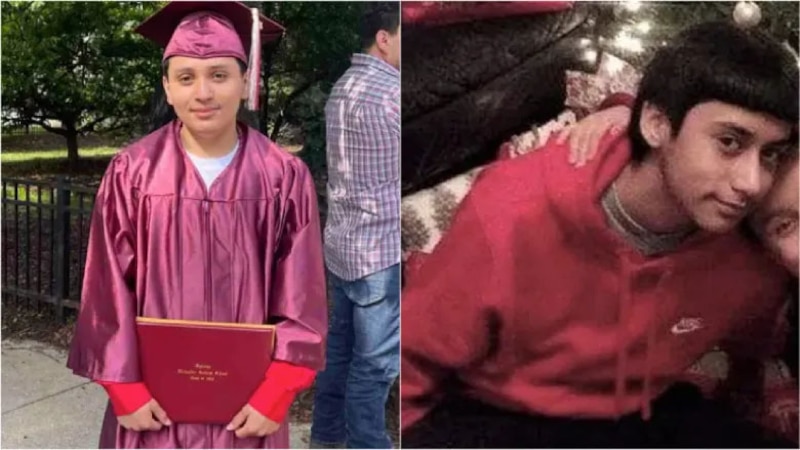
The moments after shootings are often when they are solved — or not. It’s when memories are fresh and when witnesses are most likely to talk. The longer it takes for detectives to track down witnesses, the more difficult it can be to get them to cooperate.
Time is critical, too, in gathering evidence for an arrest and prosecution before it can be altered or destroyed: the gun involved in the crime, clothing to compare to security footage, gunshot residue tests, a cell phone.
Detectives expected cooperation because they were investigating a school shooting that resulted in two dead students and two wounded students. It didn’t appear to be an “active shooter,” but police operated under the belief that someone who shoots four people in a school courtyard remains an ongoing threat because they haven’t been arrested.
The police department’s chief of detectives, Brendan Deenihan, outlined difficulties detectives encountered in an email to police department attorneys the next morning.
While detectives were at the school, they believed a student witness “provided a name of the shooter” to a school staffer. Detectives saw the staffer give a CPS photo of the named shooter to Ocon, according to the email.
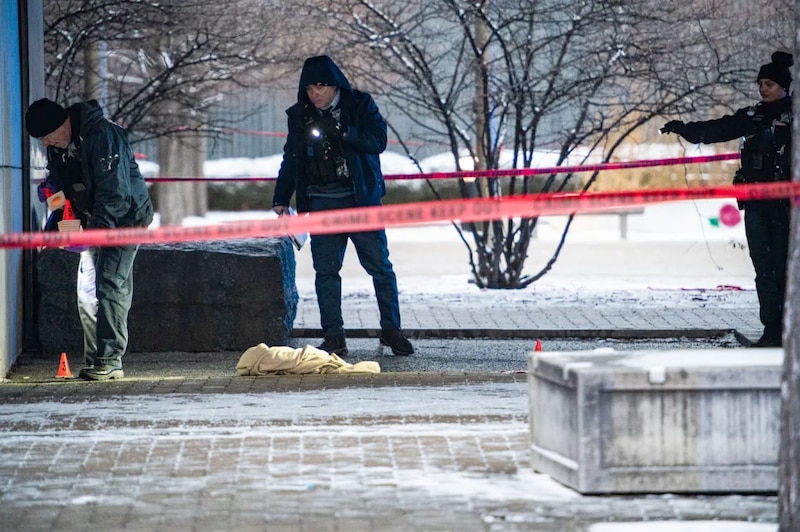
Chou said that after the shooting, the witness and a guardian were in the room where police would have been able to view surveillance footage, and the guardian had told CPS they didn’t want to talk to police. Chou said no detective ever told her they wanted to speak with the guardian. But law enforcement sources said officers did ask CPS staff to speak to the guardian and were denied access.
Police weren’t allowed inside the room because the guardian and witness were in there, and school officials didn’t want to let the family leave the room because the police were outside, Chou said.
Eighteen hours after the shooting, detectives were still trying to identify the student witness and the CPS staffer who gave the principal the piece of paper with the named shooter’s photo, according to the email sent by Deenihan. ”Efforts are on-going to identify and interview both the student who may [have] witnessed the incident and provided the offender’s name and the faculty member who provided this information to the (principal),” Deenihan wrote. In the following days, detectives spoke to the witness, who was cooperative.
As for the paper handed to Ocon, he “continually refused and resisted in providing this information to the (detectives) citing it was against CPS policy. After several hours the (principal) subsequently forwarded this information to the assigned personnel,” Deenihan wrote. Chou said a CPS attorney told her not to release the record, because it was from the school’s record keeping system, but said it would be OK to write down the information and share it with detectives, which she did. Chou said detectives left but later returned and said they needed the actual record for evidence.
And it was only after weeks of back-and-forth and a threatened subpoena before detectives got the document, according to emails.
Detectives also were unable to get video from the school, Deenihan wrote.
“Initially the school faculty (principle and CPS Security personnel) refused to provide the assigned personnel any video surveillance of the incident,” Deenihan wrote.
Deenihan wrote detectives were able to view the video after “three hours” and pulled video from the city’s 911 center that night. Chou said detectives should have just gone to the Office of Emergency Management and Communications in the first place, which is how detectives often pull video from incidents at or near CPS property because they can pull from nearby cameras that aren’t part of the CPS system.
Ald. Byron Sigcho-Lopez, whose 25th Ward encompasses the high school, was at the scene of the shooting early on and said he recalled CPS officials telling him and detectives that CPS couldn’t show them the video because legal counsel advised against it. His account mirrors that of police sources familiar with the investigation, who said CPS denied officers access to the video.
Sigcho-Lopez said he didn’t see a sense of urgency from CPS in giving police access to video and information for their investigation. And though he’s one of the most vocal critics of the police on the City Council, he said that “has to be put aside on this.”
“Look, it’s an emergency, we need to see that video footage, you know. And look I got my own perceptions here,” Sigcho-Lopez said in an interview with Illinois Answers. “Politics aside, at that point to me, that was a priority right? To say, look, we need to solve this immediately.”
Within about 30 minutes of police beginning to get information, police and district officials announced a news conference at the Near West district police station. Before it started, someone from the police department’s News Affairs office told Supt. David Brown that he might be asked about issues with CPS cooperation. “Yeah, I’ll handle it,” Brown said. Brown didn’t respond to messages seeking comment.
Sure enough, a reporter soon asked about the quality of cooperation from CPS. Brown dismissed the question and did so again after the reporter asked him to clarify.
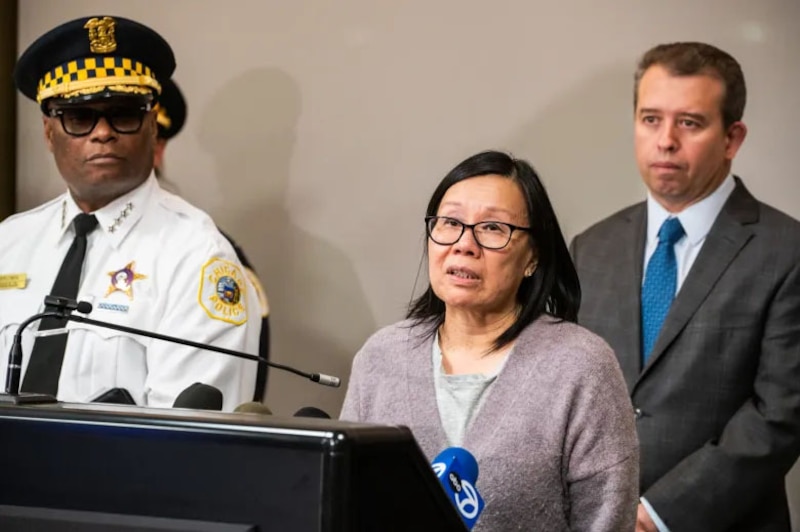
Reporter 1: Speaking of video we’re hearing from sources that the school has not turned over video. Is there any comment on that or the reasoning why there might be?
Brown: So again speculation and just, just not appropriate.
Reporter 1: But there is not — you all said POD and private video — there is not the video from the school, correct ?
Brown: So again you talk about your sources, I don’t know who those people are. We’re just starting our investigation so I think it would be irresponsible to, to …
Reporter 1: But to confirm there is ...
Brown: No, we’re not confirming your source information. We, what we’re saying is we’re just starting this video gathering, and we’re just starting the investigation any speculation would just be inappropriate.
Reporter 2: These are kids leaving school on a Friday who just got shot, two of them killed. I mean – this should never happen.
Brown: We haven’t confirmed any information about the victims, so it would just be conjecture on your part, or your sources’ part, that the victims are students. As soon as we know that we will share that information.
Contrary to Brown’s statements, police knew the victims were students and that there was a dispute over access to CPS video.
A Chicago Tribune reporter later asked a CPS spokesperson about “rumors” he had heard of the district’s failure to cooperate. An agency spokeswoman insisted that CPS was “cooperating with CPD, as always. ”By about 10 p.m. the day of the shooting, CPS provided a photo of the former student. Detectives warned other officers that the suspect “should be considered armed and dangerous.”
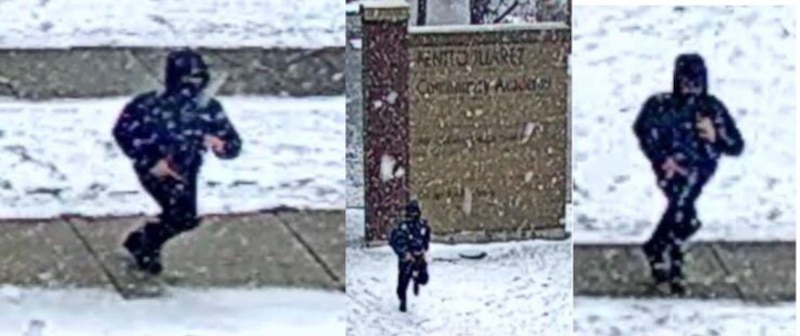
As it turned out, the boy was well-known to the police; one officer had encountered him at least four times.
Detectives also asked the crime lab to rush its comparison of shell casings recovered from the Juarez shooting with casings from another murder scene earlier in the year since they suspected the same weapon was used in both crimes.
Amid chaos, CPS braces for new school week
The week following the shooting was chaotic. School officials had to find counselors for students because at least a few dozen of them witnessed or were within earshot of their classmates being murdered, and dozens more knew the victims.
School officials needed to assure students and their parents that returning to school was safe. Some students didn’t return until after winter break. Others never returned.
One student emailed a student advocate and said they wouldn’t be coming to school because they feared for their safety. Another student emailed a teacher, who removed the student’s name from the email and shared it with Ocon:
“I got told that one of the kids who got shot was part of a gang and apparently they’re going to show up tomorrow for ‘revenge.’ I’m just saying so that there can be extra security. I don’t know if this is true but either way I wanted to let you know since you’re someone that I can trust. But please, don’t tell anyone that it was me who told you.”
One of the concerns shared by students: Social media posts threatened retaliation for the shooting and warned kids not to wear colors of the La Raza street gang that at least one of the four victims was affiliated with. School and police officials soon learned of the threat, and CPS asked for extra officers near the school during the week and adjusted dismissal time.
On the morning after the shooting, a Saturday, Deenihan emailed two CPD attorneys about issues he was having with CPS.
About the same time, he asked detectives to forward what they found about CPS policy and said he’d raise the issue with CPD’s attorneys.
“I thought you mentioned you reviewed CPS policy (online) which stated there is an exception to sharing information for a Public Safety incident. If any of you have the policy, can you please share? I am going to set up a meeting with the Lawyers next week, and move on this topic ASAP,” Deenihan wrote. “We will eventually have a school shooting inside a school,” Deenihan wrote. “CPS can’t out a 3 hour delay with sharing information.”
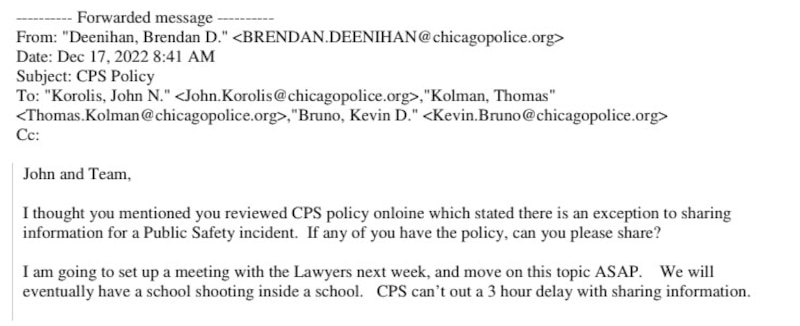
A detective supervisor responded to Deenihan with a summary of state and federal law, and of CPS’ own policies. Deenihan thanked them and said he’d raise the issue with the police department’s lawyers.
“This does help. I will share with Legal Affairs and have them review case law,” Deenihan wrote. “Thanks to all for being professional even when our counterparts may not have done so.”

On the following Monday, Chicago Police Department General Counsel Dana O’Malley followed up on Deenihan’s concerns, emailing CPS General Counsel Joe Moriarty, to discuss “an issue with CPS and CPD.”
O’Malley later asked her counterpart at CPS what they tell principals about sharing information with police.
“As we discussed, CPD’s immediate concern is what happens if we have an active shooter and need information on the spot to save lives,” she wrote.
Moriarty shared the powerpoint presentation that CPS’ law office provides to principals. It shows the principal and other CPS administrators could have shared information at the scene.
One slide said: “Federal and state law allow the disclosure of student information in connection with an emergency, to appropriate persons if the knowledge of such information is necessary to protect the health or safety of the student or other persons.”
An informal resolution
The problems came to a head, and then a resolution, in January. On Jan. 1, a supervisor in the detective division compiled a list of student and faculty witnesses for the chief CPD attorney and a detective division commander.
“Some staff have also not provided responses to our questions citing a need to contact CPS Legal or have ignored our requests for interview,” the sergeant wrote. “Some of these staff members are witnesses and others have never been interviewed. Additionally, as of this date the principal, Juan Ocon, has not turned over the evidence containing the directory information given to him the day of the incident.”
One day later, Korolis, the lead detective in the case, emailed Ocon threatening him with a subpoena if he didn’t begin to cooperate:
“I have left numerous voice messages for you and have received no response to date,” he wrote. " With the tragic homicides of these two young Chicago Public Schools students, it’s imperative that we have cooperation from your Juarez High School team. My partner and I need to interview you and your staff at your school post-haste. I have contacted the Cook County State’s Attorney’s office and they are involved with this investigation. If you are more comfortable with a subpoena to appear, let me know.”
On Jan. 5, about three weeks after the shooting, Chou, CPS’ chief of safety and security, emailed Korolis and provided records of student attendance for the date of the shooting and mentioned that she spoke to the principal, who was “able to locate the folded paper you were asking about and he indicated that he made you aware.”
Chou said in an interview with Illinois Answers that the dispute over interviewing Ocon and other staff didn’t take into account that he and staff were on Christmas break, and that Ocon may have turned off his phone when going out of town.
“He left the city, he was on time off, and he’s entitled to that. I don’t know when they were calling him. I asked him myself … did you avoid returning phone calls? Did you ignore phone calls? He said he did not ignore phone calls,” Chou said.
“There was a big block of vacation time in between there where, a principal who witnessed this and … and needed time and again … a lot of people took off their work phones and I don’t think that should be held against him.”
Ocon declined to comment.
More than two weeks after Korolis emailed the principal, subpoenas were issued for three CPS staffers. Detectives met with Ocon and other school officials just after school resumed in January, more than three weeks after the shooting.
As detectives were arranging grand jury testimony for the three CPS staffers, Chou, the school district’s chief of safety and security, pushed an effort to address what happened at Juarez.
Chou circulated a document described as “draft guidance” that pertained to school-level sharing of information.
“We would like to provide clear guidance to school leaders on info sharing and other interactions with CPD,” Chou wrote. “Based on feedback from Principals and recent experiences in the field, there is a need to codify and clarify this guidance … due to the urgency, if possible, would ask for your feedback (by tomorrow).”
The document, Chou said, will include examples of what constitutes an emergency and other clarifying information. As police and school officials were trading input on the policy in February, the 16-year-old suspect in the shooting was arrested at home. Police working in unmarked cars saw the boy run into his home with a rifle and called the department’s SWAT team and told them he was “the possible offender from a homicide.” He surrendered after the SWAT team’s Bearcat truck arrived, about 3:40 p.m. His family declined to let officers search the home, and a judge signed a warrant about 9:40 p.m., and officers cleared the home and turned it over to a search team about an hour later.
After weeks of working on a fix with input from the Chicago Police Department, progress stopped, except for Chou checking back with Chicago Police into the fall of 2023. It appears police officials never responded to her requests to finish drafting the policy.
Police sources said the two agencies have come to an informal arrangement. Detectives encountered no resistance after shootings at two high schools in late January where students were victims at Senn and Innovations high schools.
Still, 17 months after the shooting, Sigcho-Lopez said it wasn’t appropriate that CPS never conducted any broad internal review of the way its employees responded to the shooting.
“There has to be an evaluation,” he said.
“What went wrong, internally here? Why [did it take] so long? Why? Because, you know, time is of the essence, right? So, I don’t think that CPS can say, in my opinion, that they did everything they could,” Sigcho-Lopez said.
Peter Nickeas joined the Illinois Answers Project as an investigative reporter in 2023. You can reach him at pnickeas@bettergov.org.
